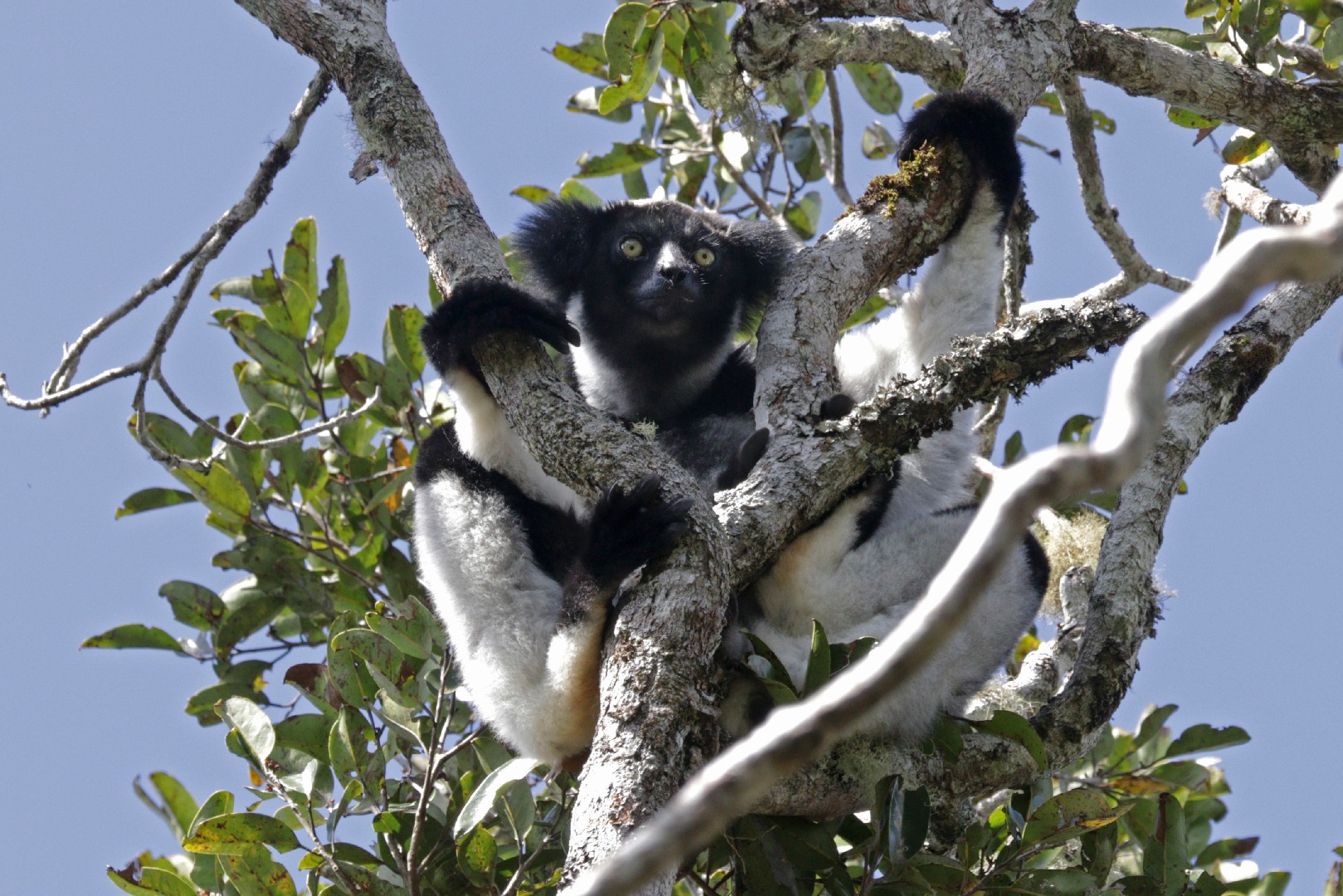Indri
A species of Babakoto, Also known as Indri lemur Scientific name : Indri indri Genus : Babakoto
Indri, A species of Babakoto
Also known as:
Indri lemur
Scientific name: Indri indri
Genus: Babakoto
Content
Description General Info
 Photo By Charles J Sharp , used under CC-BY-SA-4.0 /Cropped and compressed from original
Photo By Charles J Sharp , used under CC-BY-SA-4.0 /Cropped and compressed from original Description
Indris reach a head-body length of 64 to 90 centimeters, the tail is only a stub of 4 to 5 centimeters in length - they are the only stubby-tailed lemurs. Their weight is 6.5 to 9.5 kilograms. The hind legs are longer than the front legs, the first toe is large and opposable. Their fur is very dense and patterned white-gray-black, although the fur pattern can vary. Animals in the south are rather whitish, while animals in the north of the range are more black. The head, ears and back are usually black on all Indris. The face is characterized by the large, bushy ears and the small, almost hairless snout.
General Info
Lifespan
15-20 years
Diet
Indri primarily feeds on plant matter, concentrating especially on leaves, which forms over half its diet. Additionally, it also consumes fruits, seeds, flowers, and even bark when food is scarce.
Appearance
The indri is a large lemur with a long, stout body that averages 64-72cm in length. Its plush coat is primarily black and white with greyish patches. Its tail is short, unlike other lemurs, and it has a round face with large green eyes. An indri's display of physical features does not significantly differ across age or gender.
Behavior
Indri's behavior is characterized by diurnal and arboreal habits, spending most of its time in the treetops. It's known for its prolonged vocal communication, a form of territorial defense and group cohesion. It's highly social, living in small family groups and maintaining monogamous relationships. Indri exhibits vertical clinging and leaping, a unique locomotion mode adapted to its forest habitat.
Population
Decreasing